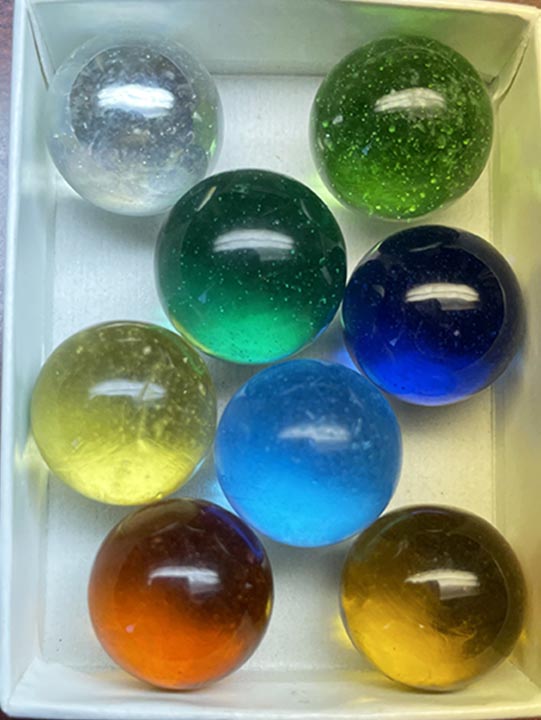Everyone knows what a penguin is, but their biologic diversity and geologic history are not common knowledge.
CLASSIFICATION:
Class Aves
Family Spheniscidae
MODERN-DAY DIVERSITY OF PENGUINS: There are 6 main groups (their "common" names are listed in blue color below), with a total of seven genera and 18 living species [their scientific names italicized). Eleven of these living species are threatened by extinction.
THE GREAT PENGUINS:
Emperor: Aptenodytes forsteri: world’s tallest and heaviest penguin; [Antartica]
King: A. patagonicus: world’s second largest penguin; [South Atlantic and South Indian oceans].
THE CRESTED PENGUINS:
Southern Rockhopper: Eudyptes chrysocome [subantartic waters of western Pacific and Indian Oceans]
Northern Rockhopper: E. moseley [southern India]
Snares: E. robustus [New Zealand]
Royal: E. schlegeli [subantarctic waters of Macquarie Island and adjacent islands, halfway between New Zealand and Antartica]
Erect-Crested: E. sclateri [New Zealand]
Fiordland: E. pachyrhnchus [New Zealand]
THE LITTLE PENGUINS:
Little: Eudyptula minor [New Zealand]
Australian little penguin: E. novahollandiae [New Zealand]
THE YELLOW-EYED PENGUIN:
Megadyptes antipodes: world’s smallest penguin [New Zealand]
THE BRUSH-TAILED PENGUINS:
Adélie: Pygoscelis adeliae [Antartica]
Chinstrap: P. antarctica [Antartica]
Gentoo: P. papua [ice-free areas of sub-Antartica islands and the Antartica Peninsula]
THE BANDED PENGUINS: (Occur where cold waters exist in temperate climates)
African: Spheniscus demersus [The only penguin in Africa: South Africa & Namibia].
Humbolt: S. humboldti [Peru]
Magellanic: S. magellanicus [Chile, Argentina, Uruguay, Brazil, and Falkland Islands].
Galápagos: S. mendiculus [The only penguin to live at the equator].
COMMENTS:
Penguins are mostly confined to the Southern Hemisphere, although one species Spheniscus mendiculus, which is one of the “Banded Penguins,” lives at the equator. It should be noted, however, that Spheniscus demersus (a “banded penguin”—see list above) lives in rocky areas washed by cold current.
An adult of Spheniscus demersus. After a year, the juveniles obtain their adult plumage. Photo taken at the Monterey Bay Aquarium, Monterey, California, where they have a rocky shoreline-live exhibit with webcams. Photo courtesy of K. Solomon (2023).
Penguins do not live in the Arctic, and, contrary to popular opinion, only five species, out of 18, live in Antarctica.
Gentoo penguins are the fastest underwater birds in the world. They can reach speeds of about 22 miles per hour.
Emperor penguins are the world’s deepest diving birds. They can dive to depths of up to 1,800 feet.
GEOLOGIC RANGE OF PENGUINS: Middle to late Paleocene (approximately 60–55 million years ago) to modern day.
The earliest known penguin is Kumimanu biceae, of middle Paleocene age [as old as approximately 60 m.y.a.], from South Island of New Zealand. Its discovery was announced in Dec. 2017.
Kuminmanu biceae: This very elongate and stream-lined penguin was the size of a human (5 foot, 9 inches and approximately 223 pounds), which is 1.5 times the size of the Emperor Penguin of today.
Another New Zealand Paleocene species (about the same age and size as K. bicaea) is K. fordycei Ksepka et al., 2023; it may have been the largest penguin to ever have lived.
REFERENCES CONSULTED:
en.Wikipedia.org
Ksepka, D.T. and six others. 2023. Largest-known fossil penguin…Journal of Paleontology 97:434–453. (pdf is $36 dollars for non-members of their society).
Monterey Bay Aquarium: www.montereybayaquarium.org
Georgia Aquarium: www.georgiaaquarium.org























